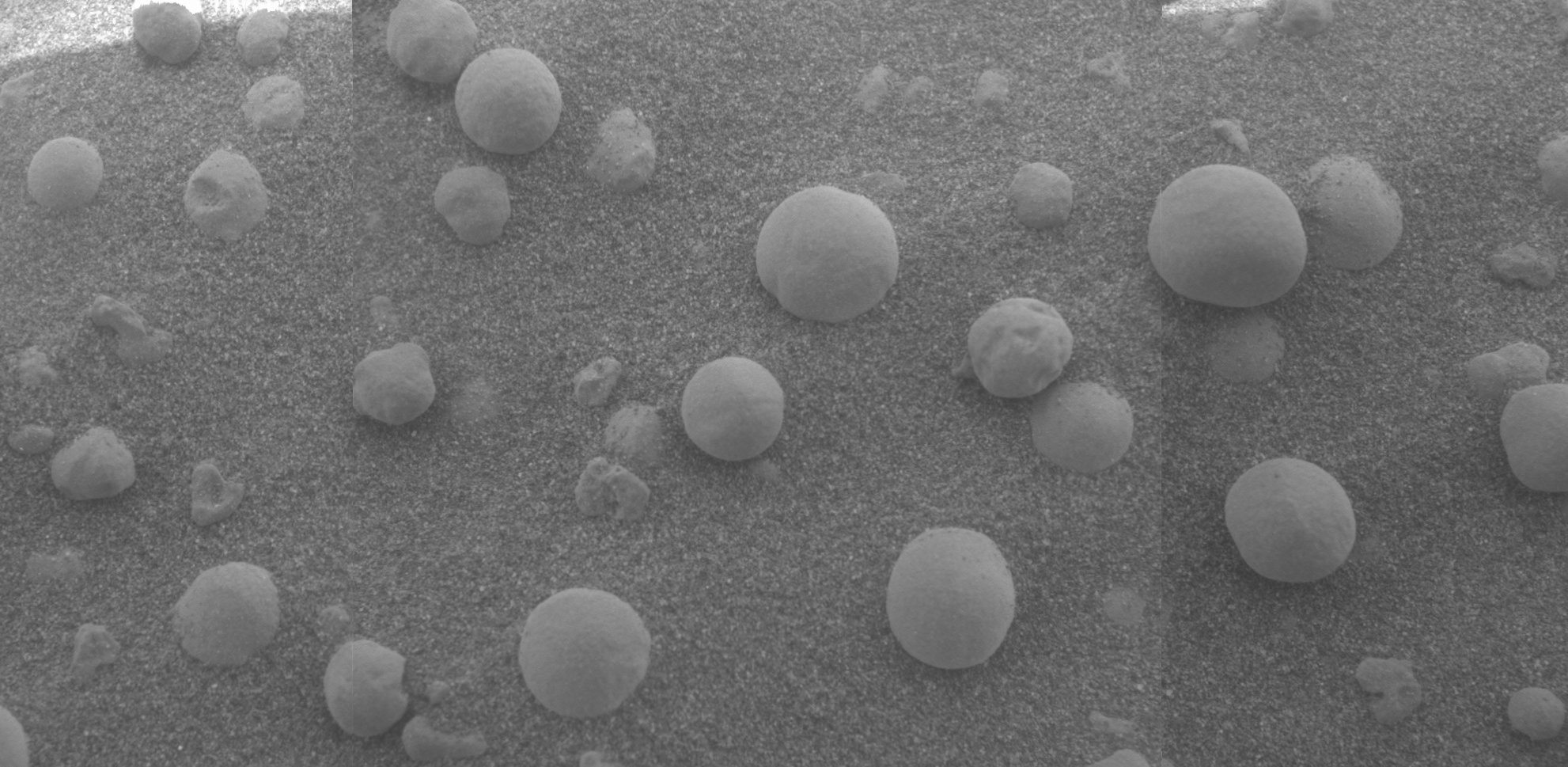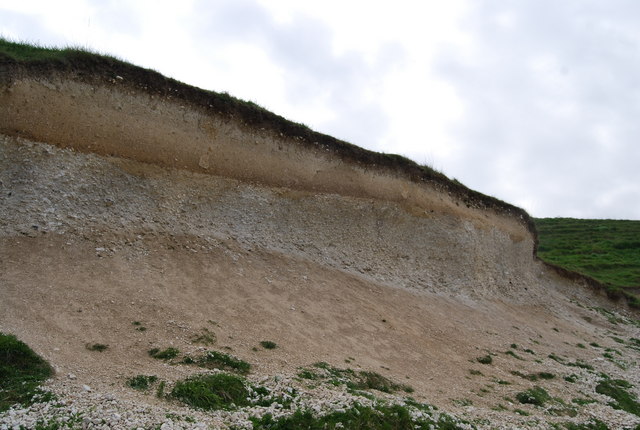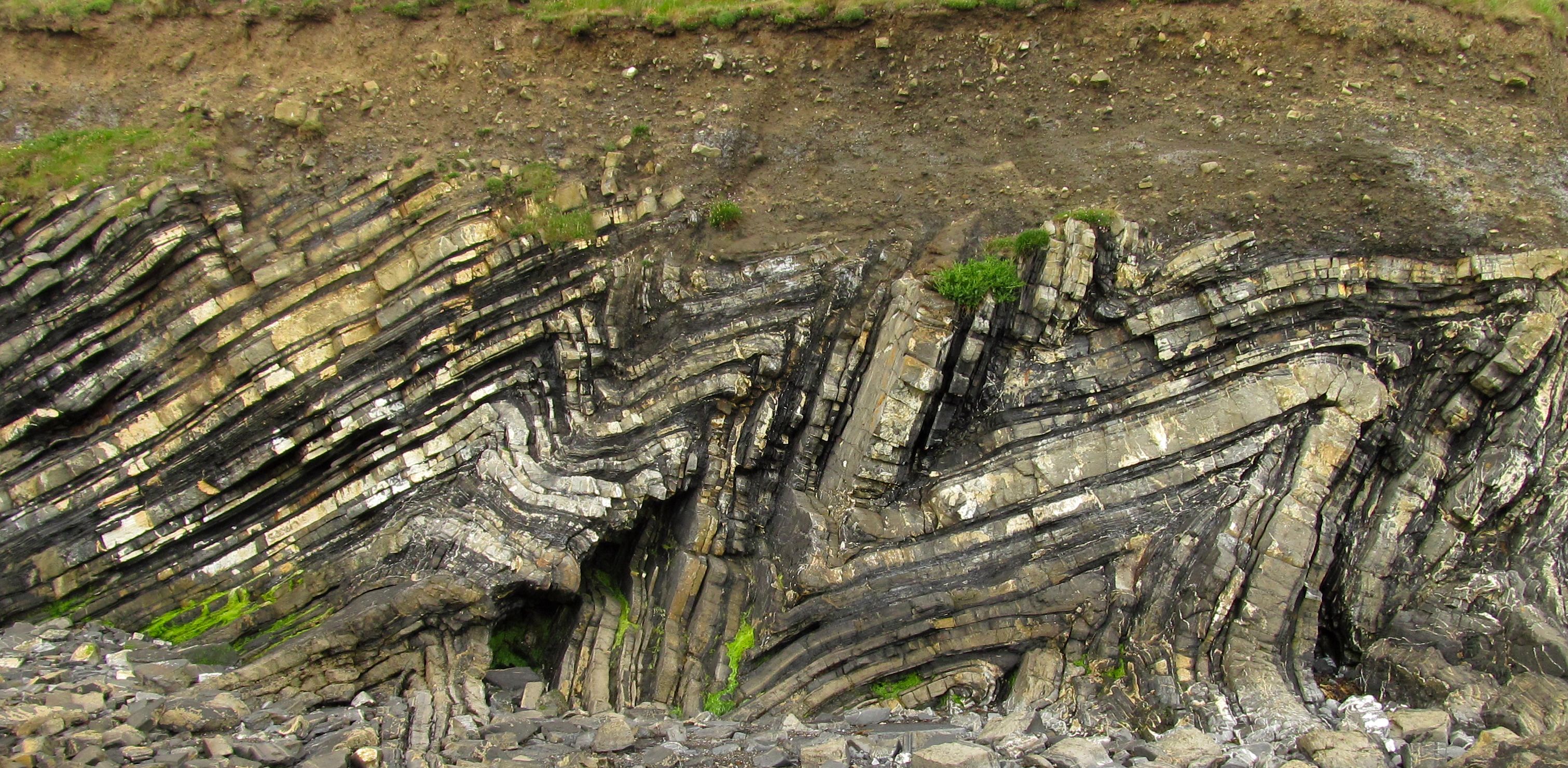|
Ntawere Formation
The Ntawere Formation is a Middle Triassic (Anisian) geological formation in Zambia, preserving fossils of synapsids, archosaurs, and temnospondyls. Geology Several different facies are present in the Ntawere Formation, reconstructing a floodplain environment. The coarsest facies are trough cross-bedded conglomeratic sandstone full of mineral concretions. These coarse deposits formed in ancient channels such as riverbeds. Another type of facies involves thick beds of mudstone interbedding with thinner layers of fine-grained sandstone, indicating alternating low- and high-energy water flow within the channels. Graded sandstone to mudstone overbank deposits (complete with ripple marks) occur near channel deposits. Extensive successions of laminated or massive mudstone are common, often containing slickensides, calcareous nodules or layers (marls), and/or hematite nodules. These types of thick mud/marl layers likely formed in more quiet parts of the floodplain isolated from turb ... [...More Info...] [...Related Items...] OR: [Wikipedia] [Google] [Baidu] |
Luangwa Basin
Luangwa may refer to: *Luangwa River, the major river of eastern Zambia *Luangwa Bridge, which crosses the Luangwa River *Luangwa River (Mporokoso), a tributary of the Kalungwishi River in Mporokoso District, Zambia; *Luangwa, Zambia, a town in Zambia at the confluence of the Luangwa and Zambezi Rivers, and previously called ''Feira''; *Luangwa District of eastern Lusaka Province, Zambia, of which Luangwa town is the headquarters; *South Luangwa National Park *North Luangwa National Park North Luangwa National Park is a national park in Zambia, the northernmost of the three in the valley of the Luangwa River. Founded as a game reserve in 1938, it became a national park in 1972 and now covers 4,636 km². Like the South Luangw ... * ''Luangwa'', a genus of cynodonts {{disambig ... [...More Info...] [...Related Items...] OR: [Wikipedia] [Google] [Baidu] |
Cross-bedding
In geology, cross-bedding, also known as cross-stratification, is layering within a stratum and at an angle to the main bedding plane. The sedimentary structures which result are roughly horizontal units composed of inclined layers. The original depositional layering is tilted, such tilting not being the result of post-depositional deformation. Cross-beds or "sets" are the groups of inclined layers, which are known as cross-strata. Cross-bedding forms during deposition on the inclined surfaces of bedforms such as ripples and dunes; it indicates that the depositional environment contained a flowing medium (typically water or wind). Examples of these bedforms are ripples, dunes, anti-dunes, sand waves, hummocks, bars, and delta slopes.Collinson, J.D., Thompson, D.B., 1989, Sedimentary Structures (2nd ed): Academic Division of Unwin Hyman Ltd, Winchester, MA, XXX p. Environments in which water movement is fast enough and deep enough to develop large-scale bed forms fall int ... [...More Info...] [...Related Items...] OR: [Wikipedia] [Google] [Baidu] |
Unio (bivalve)
''Unio'' is a genus of medium-sized freshwater mussels, aquatic bivalve mollusks in the family Unionidae, the river mussels. They are found throughout Europe, Africa, and the Middle East, with some species introduced to East Asia. Fossil species are also known from the Jurassic of North America. ''Unio'' is the type genus of the family Unionidae. Species Species in the genus ''Unio'' include: *''Unio abyssinicus'' Martens, 1866 *''Unio bruguierianus'' Bourguignat, 1853 *'' Unio caffer'' Krauss, 1848 *'' Unio cariei'' - extinctBouchet, P. & von Cosel, R. 1996.Unio cariei 2006 IUCN Red List of Threatened Species. Downloaded on 7 August 2007. (no longer recognised) *'' Unio courtillieri'' Hattemann, 1859 *'' Unio crassus'' Philipsson, 1788 (Thick shelled river mussel) - near threatened *'' Unio damascensis'' Lea, 1863 *'' Unio delicatus'' Lea, 1863 *'' Unio delphinus'' Spengler, 1793 *'' Unio dembeae'' Reeve, 1865 *'' Unio durieui'' Deshayes, 1847 *'' Unio elongatulus'' C. Pfeif ... [...More Info...] [...Related Items...] OR: [Wikipedia] [Google] [Baidu] |
Red Beds
Red beds (or redbeds) are sedimentary rocks, typically consisting of sandstone, siltstone, and shale, that are predominantly red in color due to the presence of ferric oxides. Frequently, these red-colored sedimentary strata locally contain thin beds of conglomerate, marl, limestone, or some combination of these sedimentary rocks. The ferric oxides, which are responsible for the red color of red beds, typically occur as a coating on the grains of sediments comprising red beds. Classic examples of red beds are the Permian and Triassic strata of the western United States and the Devonian Old Red Sandstone facies of Europe. Primary red beds Primary red beds may be formed by the erosion and redeposition of red soils or older red beds, but a fundamental problem with this hypothesis is the relative scarcity of red-colored source sediments of suitable age close to an area of red-bed sediments in Cheshire, England. Primary red beds may also form by in situ (early diagenetic) redden ... [...More Info...] [...Related Items...] OR: [Wikipedia] [Google] [Baidu] |
Hematite
Hematite (), also spelled as haematite, is a common iron oxide compound with the formula, Fe2O3 and is widely found in rocks and soils. Hematite crystals belong to the rhombohedral lattice system which is designated the alpha polymorph of . It has the same crystal structure as corundum () and ilmenite (). With this it forms a complete solid solution at temperatures above . Hematite naturally occurs in black to steel or silver-gray, brown to reddish-brown, or red colors. It is mined as an important ore mineral of iron. It is electrically conductive. Hematite varieties include ''kidney ore'', ''martite'' ( pseudomorphs after magnetite), ''iron rose'' and ''specularite'' ( specular hematite). While these forms vary, they all have a rust-red streak. Hematite is not only harder than pure iron, but also much more brittle. Maghemite is a polymorph of hematite (γ-) with the same chemical formula, but with a spinel structure like magnetite. Large deposits of hematite are ... [...More Info...] [...Related Items...] OR: [Wikipedia] [Google] [Baidu] |
Marl
Marl is an earthy material rich in carbonate minerals, clays, and silt. When hardened into rock, this becomes marlstone. It is formed in marine or freshwater environments, often through the activities of algae. Marl makes up the lower part of the cliffs of Dover, and the Channel Tunnel follows these marl layers between France and the United Kingdom. Marl is also a common sediment in post-glacial lakes, such as the marl ponds of the northeastern United States. Marl has been used as a soil conditioner and neutralizing agent for acid soil and in the manufacture of cement. Description Marl or marlstone is a carbonate-rich mud or mudstone which contains variable amounts of clays and silt. The term was originally loosely applied to a variety of materials, most of which occur as loose, earthy deposits consisting chiefly of an intimate mixture of clay and calcium carbonate, formed under freshwater conditions. These typically contain 35–65% clay and 65–35% carbonate. The te ... [...More Info...] [...Related Items...] OR: [Wikipedia] [Google] [Baidu] |
Calcareous
Calcareous () is an adjective meaning "mostly or partly composed of calcium carbonate", in other words, containing lime or being chalky. The term is used in a wide variety of scientific disciplines. In zoology ''Calcareous'' is used as an adjectival term applied to anatomical structures which are made primarily of calcium carbonate, in animals such as gastropods, i.e., snails, specifically about such structures as the operculum, the clausilium, and the love dart. The term also applies to the calcium carbonate tests of often more or less microscopic Foraminifera. Not all tests are calcareous; diatoms and radiolaria have siliceous tests. The molluscs are calcareous, as are calcareous sponges (Porifera), that have spicules which are made of calcium carbonate. In botany ''Calcareous grassland'' is a form of grassland characteristic of soils containing much calcium carbonate from underlying chalk or limestone rock. In medicine The term is used in pathology, for ... [...More Info...] [...Related Items...] OR: [Wikipedia] [Google] [Baidu] |
Slickenside
In geology, a slickenside is a smoothly polished surface caused by frictional movement between rocks along a fault. This surface is typically striated with linear features, called slickenlines, in the direction of movement. Geometry of slickensides A slickenside can occur as a single surface at a fault between two hard surfaces. Alternatively, the gouge between the fault surfaces may contain many anastamosing slip surfaces that host slickensides. These slip surfaces are on the order of 100 micrometers thick, and the size of the grains that constitute the surface are ultra-fine (0.01-1 micrometers in diameter).Power, William L., and Terry E. Tullis. "The relationship between slickenside surfaces in fine-grained quartz and the seismic cycle." Journal of Structural Geology 11.7 (1989): 879-893. These grains are unlike typical grains of fault rock in that they have irregular grain boundaries and few crystal lattice defects (termed dislocations). Slickensides have conspicuous ... [...More Info...] [...Related Items...] OR: [Wikipedia] [Google] [Baidu] |
Ripple Marks
In geology, ripple marks are sedimentary structures (i.e., bedforms of the lower flow regime) and indicate agitation by water ( current or waves) or wind. Defining ripple cross-laminae and asymmetric ripples * ''Current ripple marks'', ''unidirectional ripples'', or ''asymmetrical ripple marks'' are asymmetrical in profile, with a gentle up-current slope and a steeper down-current slope. The down-current slope is the angle of repose, which depends on the shape of the sediment. These commonly form in fluvial and aeolian depositional environments, and are a signifier of the lower part of the Lower Flow Regime. * Ripple cross-laminae forms when deposition takes place during migration of current or wave ripples. A series of cross-laminae are produced by superimposing migrating ripples. The ripples form lateral to one another, such that the crests of vertically succeeding laminae are out of phase and appear to be advancing upslope. This process results in cross-bedded ... [...More Info...] [...Related Items...] OR: [Wikipedia] [Google] [Baidu] |
Overbank
An overbank is an alluvial geological deposit consisting of sediment that has been deposited on the floodplain of a river or stream by flood waters that have broken through or overtopped the banks. The sediment is carried in suspension, and because it is carried outside of the main channel, away from faster flow, the sediment is typically fine-grained. An overbank deposit usually consists primarily of fine sand, silt and clay. Overbank deposits can be beneficial because they refresh valley soils. Overbank deposits can also be referred to as floodplain deposits. Examples include natural levees and crevasse splays. Geomorphology Floodplains are far wider than the channel they border, reaching widths of up to 100 kilometers, and their length is 10 times that. They are thin and roughly planar in shape. Unlike channel bars, which often build horizontally, overbank deposits build vertically. Depositional processes and facies Overbank deposits are fine-grained and accumulate ver ... [...More Info...] [...Related Items...] OR: [Wikipedia] [Google] [Baidu] |
Graded Bedding
In geology, a graded bed is one characterized by a systematic change in grain or clast size from one side of the bed to the other. Most commonly this takes the form of normal grading, with coarser sediments at the base, which grade upward into progressively finer ones. Such a bed is also described as fining upward. Normally graded beds generally represent depositional environments which decrease in transport energy (rate of flow) as time passes, but these beds can also form during rapid depositional events. They are perhaps best represented in turbidite strata, where they indicate a sudden strong current that deposits heavy, coarse sediments first, with finer ones following as the current weakens. They can also form in terrestrial stream deposits. In reverse grading or inverse grading the bed coarsens upwards. This type of grading is relatively uncommon but is characteristic of sediments deposited by grain flow and debris flow. It is also observed in aeolian processes, such as ... [...More Info...] [...Related Items...] OR: [Wikipedia] [Google] [Baidu] |
Interbedding
In geology, interbedding occurs when beds (layers of rock) of a particular lithology lie between or alternate with beds of a different lithology. For example, sedimentary rocks may be interbedded if there were sea level variations in their sedimentary depositional environment. Intercalation is a special case of interbedding where a layer is variably inserted into an already existing sequence; or where two separate depositional environments in close spatial proximity migrate alternately across the contact. While interbedding has layers that are horizontally flat (or aligned with the angle of the entire stratum), intercalated rock on the other hand has slanted layers that streak through each other (even when it aligns with the stratum). For example intercalated conglomerate and sandstone looks like ripples of different material networked through each other somewhat off the horizontal, as the beds are deposited in a gradient. This is likely due to differing fluvial conditions and ... [...More Info...] [...Related Items...] OR: [Wikipedia] [Google] [Baidu] |







